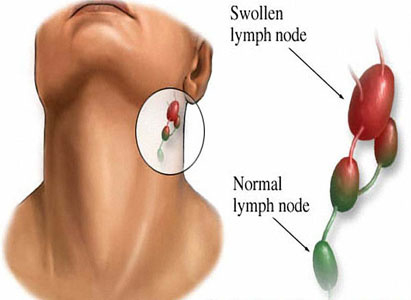The diagnosis of lymphoma can not be worked out blindly, since clinical symptoms vary when lesion location and range change, and blind diagnosis will increase the misdiagnosis rate. And below are the examinations may help a patient diagnose lymphoma.

1. Imaging examination
1)X-ray is to observe the lymph nodes of lung hilum, midiastinum, carina tracheae and endosperm, while it can observe if any infiltration in lung hilum occurs. The obvious swelling lymph nodes in anterosuperior mediastinum and lung hilum may indicate the sign of malignancy, but before that the swelling lymph nodes arising from extrapulmonary tuberculosis, fungous infection or other cancers should be excluded. If a patient is suspected suffering from swelling lymph nodes in pelvis, retroperitoneum and paraaortic regions may have lower extremity lymphography for diagnosis.
2) Computerized tomography(CT). It can detect the lymph tissues which can not find through lower abdominal lymphadenography. Chest CT scan can help to diagnose mediastinal lesions and the lymph nodes closed to trachea, lung hilum and aortic clear space.
3)Magnetic resonance imaging (MRI) can reveal the structure of blood vessels and can have multidirectional and multi-plane scans inside body.
4) Radioisotopic scanning. Bone scans can find lesion early than X-ray. Bone scan can indicate the rising intake of nuclide in lesions. In addition, diffuse histocytic lymphoma normally would come with bone infiltration.
5)Ultrasound examination can detect the lymph nodes over 2cm dia., however, it cannot identify if the increased lymph node is causing from cancer infiltration or reactive hyperplasia or chronic inflammation. Besides, through it can find the splenohepatomegalia and the obvious nodules in liver or spleen.
Doctor would get some tissues from the tumor found in a lymphoma patient through imaging examinations for biopsy to confirm if the tumor is benign or malignant.
2. Biopsy
1) Biopsy of lymph nodes. Malignant lymphoma should be diagnosed through biopsy and pathological samples should mainly be lymph nodes.
2) Biopsy of bone marrow. The incidence for lymphoma encroaches on bone marrow can highly reach 40%~90%. Bone marrow biopsy can confirm if malignant lymphoma encroaches on bone marrow and it normally has to be performed through puncture.
3)Biopsy of liver. In Non-Hodgkin lymphoma cases, small lymph cells and small cleaved cells are more tending to encroach on liver.
4) Blood picture. The white blood cells of Hodgkin’s disease in most cases are within normal range while little patients appear mild or obvious increase of white blood cells. Besides that, a non-Hodgkin lymphoma patient would present abnormal increase of white blood cells and is accompanied by opposite or absolute increase of lymph cells.
Modern Cancer Hospital Guangzhou reminds that when swelling and other abnormality occur in body, the patient should go to hospital timely for examination and treatments, by which can effectively control the disease.
 viber
viber